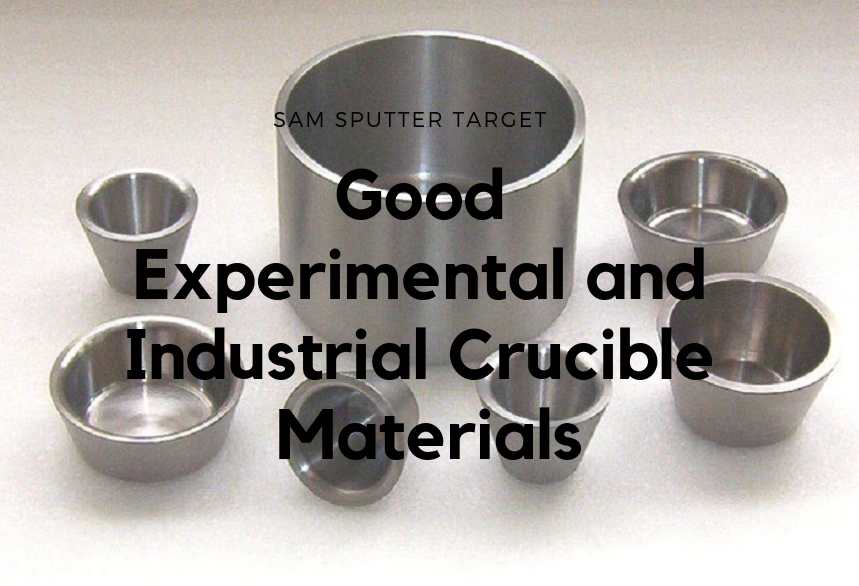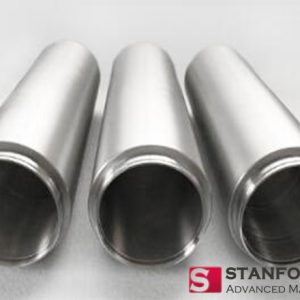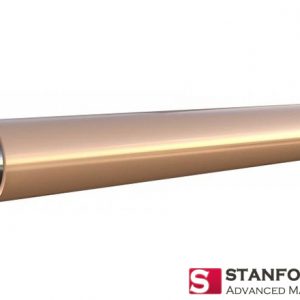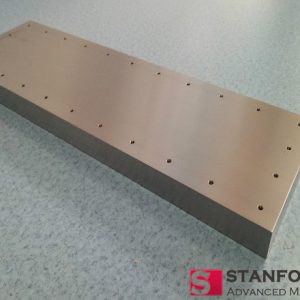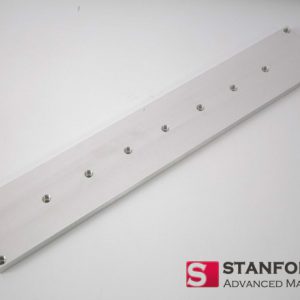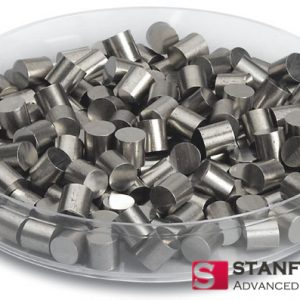The crucible is an important vessel for scientific experiments as well as industrial productions. It is a pot that is used to keep metals for melting in a furnace. So furnace crucibles are usually designed to withstand the highest temperatures encountered in the metal casting works, which means the crucible should essentially be made of materials with a much higher melting point than the casting temperature. In addition, the crucible materials should also have good strength even when extremely hot.
Crucibles come in a variety of metal constructions, such as tungsten crucibles, zirconium crucibles, and etc. These materials can resist extreme temperatures in typical experiments and operations. PBN crucible has the additional benefit of being a highly durable material. Here are more details about the crucibles of different materials used in laboratories and factories.
Pyrolytic Boron Nitride Crucible (PBN Crucible)
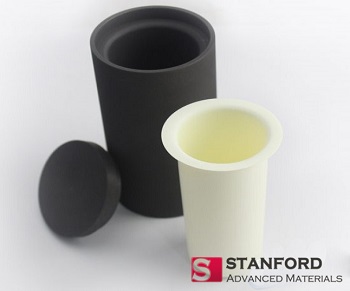
The pyrolytic boron nitride crucible (PBN crucible) has excellent thermal stability, intrinsic purity, and much greater mechanical strength, which make PBN very attractive to many industry sectors. Compared with normal boron nitride ceramic, PBN has a much better purity level and density. PBN does not have to undergo a conventional hot press sintering process and does not add any sintering agent.
| Symbol | PBN |
| Melting Point | 2973 °C |
| Density | 2.15-2.19 g/cm3 |
| Boiling Point | N/A |
Further Reading: An Overview of Pyrolytic Boron Nitride
Zirconium Crucible
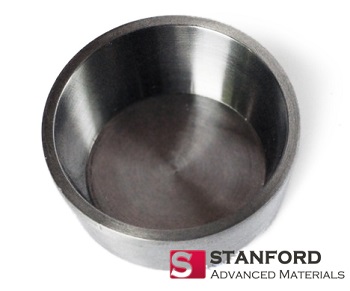 Zirconium can be used to make high-temperature superconductive materials and has wide applications in medical equipment, such as the zirconium crucible. Zirconium crucible has strong resistance to corrosion, so it is mainly used as a refractory and opacifier, although small amounts are used as an alloying agent.
Zirconium can be used to make high-temperature superconductive materials and has wide applications in medical equipment, such as the zirconium crucible. Zirconium crucible has strong resistance to corrosion, so it is mainly used as a refractory and opacifier, although small amounts are used as an alloying agent.
| Symbol: | Zr |
| Melting Point: | 1855 °C, 3371 °F, 2128 K |
| Boiling Point: | 4409 °C, 7968 °F, 4682 K |
| Density: | 6.52 g·cm3 |
| Mohs Hardness: | 5 |
Tungsten Crucible
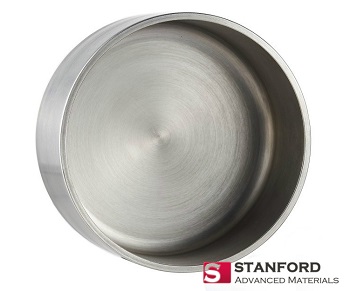 Tungsten is a rare and hard chemical element that has the highest melting point, high tensile strength, high density, and low vapor pressure. Tungsten crucibles are vessels made of tungsten or tungsten alloys and are used for melting and calcining materials at high temperatures. Tungsten crucibles are increasingly being used for a variety of purposes and are being produced by many companies. These are made in a variety of designs, and shapes, depending upon the specifications of the clients. Tungsten crucibles are often prepared in addition to molybdenum of up to 0.9% or some other elements in slight quantities.
Tungsten is a rare and hard chemical element that has the highest melting point, high tensile strength, high density, and low vapor pressure. Tungsten crucibles are vessels made of tungsten or tungsten alloys and are used for melting and calcining materials at high temperatures. Tungsten crucibles are increasingly being used for a variety of purposes and are being produced by many companies. These are made in a variety of designs, and shapes, depending upon the specifications of the clients. Tungsten crucibles are often prepared in addition to molybdenum of up to 0.9% or some other elements in slight quantities.
The following are some major usages of tungsten crucibles:
-Tungsten crucibles are used for growing sapphires and monocrystals, as well as rare earth metal melting.
-Due to the resistance to certain metal oxides and molten metals, tungsten crucibles are used in electronic product making, technologies for thermal vaporization, etc.
-It is also used in heating elements for induction furnaces, smelting of metals, making high-temperature containers, etc.
| Symbol: | W |
| Melting Point: | 3422 °C, 6192 °F, 3695 K |
| Boiling Point: | 5555 °C, 10031 °F, 5828 K |
| Density: | 19.25 g·cm3 |
| Mohs Hardness: | 7.8 |
Further Reading: Tungsten Crucible – A Good Choice For Scientific Experiments
Molybdenum Crucible
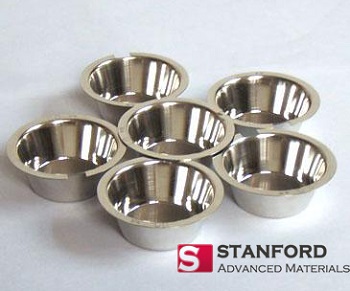 Molybdenum is a ductile metal and is highly resistant to corrosion. It has one of the highest melting points of all pure elements — only the elements tantalum and tungsten have higher melting points. Formed molybdenum crucibles perform extremely well in Heat Exchanger Method (HEM) process and are suitable for melting and solidifying of single crystals. Molybdenum crucibles from Stanford Advanced Materials have thin walls and exhibit superior creep resistance.
Molybdenum is a ductile metal and is highly resistant to corrosion. It has one of the highest melting points of all pure elements — only the elements tantalum and tungsten have higher melting points. Formed molybdenum crucibles perform extremely well in Heat Exchanger Method (HEM) process and are suitable for melting and solidifying of single crystals. Molybdenum crucibles from Stanford Advanced Materials have thin walls and exhibit superior creep resistance.
| Symbol: | Mo |
| Melting Point: | 2622°C, 4751.6°F, 2895.15 K |
| Boiling Point: | 4639°C, 8382.2°F, 4912.15 K |
| Density: | 10.28 g·cm3 |
| Mohs Hardness: | 5.5 |
Tantalum Crucible
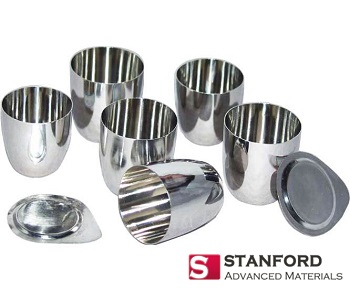 Tantalum (Ta) is a dark blue-gray metal that is very heavy, ductile and hard. It has high corrosion resistance. Tantalum crucible is especially resistant to chemicals at temperatures below 150 °C and can only be dissolved with hydrofluoric acid. It has the fourth-highest melting point of all metals and is able to form extremely thin and protective oxide layers for high-quality capacitors, making it an excellent material for laboratory crucibles.
Tantalum (Ta) is a dark blue-gray metal that is very heavy, ductile and hard. It has high corrosion resistance. Tantalum crucible is especially resistant to chemicals at temperatures below 150 °C and can only be dissolved with hydrofluoric acid. It has the fourth-highest melting point of all metals and is able to form extremely thin and protective oxide layers for high-quality capacitors, making it an excellent material for laboratory crucibles.
| Symbol: | Ta |
| Melting Point: | 3017 °C, 5463 °F, 3290 K |
| Boiling Point: | 5458 °C, 9856 °F, 5731 K |
| Density: | 16.69 g·cm3 |
| Mohs Hardness: | 6.5 |
Conclusion
Thank you for reading our article and we hope it can help you better understand the 5 types of crucibles. If you want to know more about chemical and industrial materials, we would like to advise you to visit Stanford Advanced Materials (SAM) for more information.
